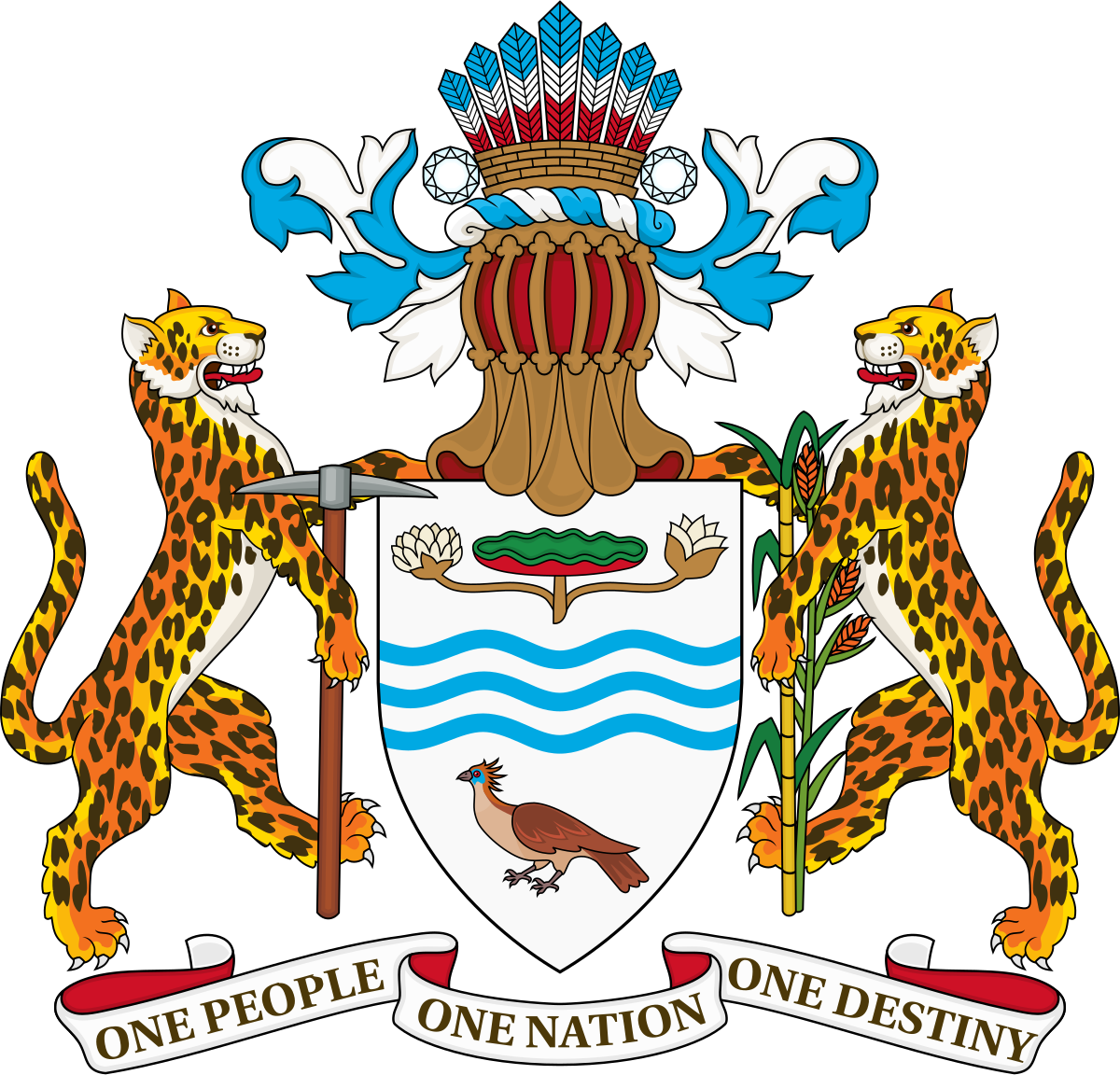About Guyana
A multiethnic society, the Co-operative Republic of Guyana is a small South American Nation with a rich history and diverse cultural makeup. Guyana is situated on the North East Coast of the continent of South America, bordered by the Atlantic Ocean to the North, Brazil, to the South, Venezuela to the West and Suriname to the East.
Language
The official language spoken in Guyana is English. In some parts of Guyana, Guyanese Creole is predominately spoken while in Amerindian villages some natives still maintain their tribal languages.
Geography
Geographically, Guyana has four distinct areas: The Low Coastal Plain; the Hilly Sand and Clay Belt; the Highland Region and the Interior Savannahs. The country spans an area of 214,970 sq. km with over 75% of the land mass covered in pristine forests. The coastline, where most of the population resides is 1-1.5 metres below sea level at high tide. The country is rich in mineral deposits such as bauxite, diamonds, gold and in 2015 made the remarkable discovery of vast oil resources. The main rivers in Guyana are the Demerara River, Essequibo River and the Berbice River, the country is considered the “Land of Many Water” as its name translates. Guyana is home to one of the world’s largest single drop waterfalls the Kaieteur Falls, located at Kaieteur National Park in the Potaro River measuring 226 metres. Guyana’s forest is understudied but said to be the home of over 8,000 species of flora, fauna, and animals.

Brown Capuchin Monkey Photographed by Bonnie Kittle on Unsplash
Climate
Guyana enjoys two primary weather patterns; pleasant and warm tropical sunshine and rain throughout the year. Primarily, the country experiences rainfall from May to parts of August and then from November into January. Approximately 2,300mm of rainfall is experienced in Georgetown, the capital city, yearly. For the rest of the year the climate is humid with moderated northeast trade winds. The mean temperature experienced is 27 degrees Celsius with average temperatures ranging from 24-31 degrees Celsius.

Man Enjoys Savannah Breeze Photographed by Bonnie Kittle on Unsplash
Population
According to the Census conducted in 2012, Guyana’s population is estimated to be approximately 747,884, 90% of whom live along the coastal region and along the banks of the three major rivers.
Religion
Guyanese enjoy religious freedom and are free to practice their chosen religion openly and without fear of persecution. The main religions practised by Guyanese are Christianity, Hinduism and Islam. Churches, Temples and Mosques are erected throughout the country and are welcoming to newcomers. Religious dates are commemorated with national holidays where the entire nation joins in celebrating.

Man Celebrates the Festival of Lights - Diwali Photgraphed by Joshua Gobin on Unsplash
Clothing
Due to the tropical climate, casual light clothing is typically worn throughout the year. During religious and cultural celebrations it is typical to see cultural wear from the six main races/ethnicities, African, East Indian, Chinese, Amerindian, Portuguese and European worn to these events.
Government
Guyana became an independent nation from the colonial role of Britain in the year 1966 and attained Cooperative Republic status in 1970 where a non-executive President replaced the Governor-General. In 1980, a new constitution was legislated giving executive powers to the President. The National Assembly comprises a 65-member body elected through proportional representation and led by the President.
